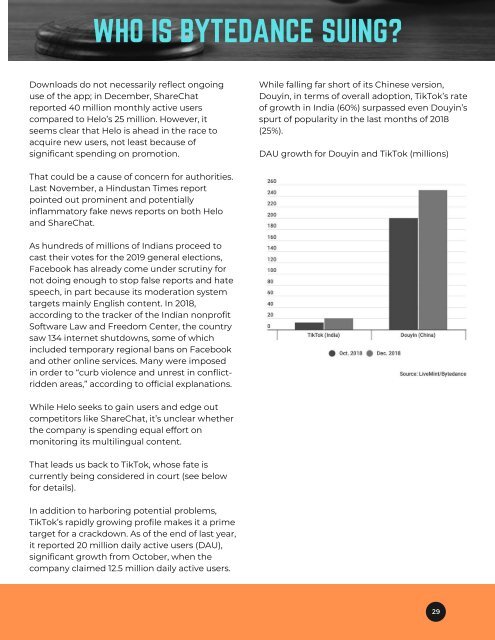The Bytedance Report 2019 by TechNode
The content of this report was first published in our In Focus: Bytedance Bi-weekly Newsletter for all our TechNode Squared members as part of the exclusive membership benefits. We will continue to develop specialized vertical newsletter as we go so be sure to subscribe to our membership program and be the first to obtain insightful analysis as such. By becoming our member, you will also get to add your voice to the first tech journalism network in China and be immersed with everything tech in China. Visit https://technode.com/become-a-member/ to learn more!
The content of this report was first published in our In Focus: Bytedance Bi-weekly Newsletter for all our TechNode Squared members as part of the exclusive membership benefits. We will continue to develop specialized vertical newsletter as we go so be sure to subscribe to our membership program and be the first to obtain insightful analysis as such.
By becoming our member, you will also get to add your voice to the first tech journalism network in China and be immersed with everything tech in China. Visit https://technode.com/become-a-member/ to learn more!
You also want an ePaper? Increase the reach of your titles
YUMPU automatically turns print PDFs into web optimized ePapers that Google loves.
WHO IS BYTEDANCE SUING?<br />
Downloads do not necessarily reflect ongoing<br />
use of the app; in December, ShareChat<br />
reported 40 million monthly active users<br />
compared to Helo’s 25 million. However, it<br />
seems clear that Helo is ahead in the race to<br />
acquire new users, not least because of<br />
significant spending on promotion.<br />
While falling far short of its Chinese version,<br />
Douyin, in terms of overall adoption, TikTok’s rate<br />
of growth in India (60%) surpassed even Douyin’s<br />
spurt of popularity in the last months of 2018<br />
(25%).<br />
DAU growth for Douyin and TikTok (millions)<br />
That could be a cause of concern for authorities.<br />
Last November, a Hindustan Times report<br />
pointed out prominent and potentially<br />
inflammatory fake news reports on both Helo<br />
and ShareChat.<br />
As hundreds of millions of Indians proceed to<br />
cast their votes for the <strong>2019</strong> general elections,<br />
Facebook has already come under scrutiny for<br />
not doing enough to stop false reports and hate<br />
speech, in part because its moderation system<br />
targets mainly English content. In 2018,<br />
according to the tracker of the Indian nonprofit<br />
Software Law and Freedom Center, the country<br />
saw 134 internet shutdowns, some of which<br />
included temporary regional bans on Facebook<br />
and other online services. Many were imposed<br />
in order to “curb violence and unrest in conflictridden<br />
areas,” according to official explanations.<br />
While Helo seeks to gain users and edge out<br />
competitors like ShareChat, it’s unclear whether<br />
the company is spending equal effort on<br />
monitoring its multilingual content.<br />
That leads us back to TikTok, whose fate is<br />
currently being considered in court (see below<br />
for details).<br />
In addition to harboring potential problems,<br />
TikTok’s rapidly growing profile makes it a prime<br />
target for a crackdown. As of the end of last year,<br />
it reported 20 million daily active users (DAU),<br />
significant growth from October, when the<br />
company claimed 12.5 million daily active users.<br />
29


